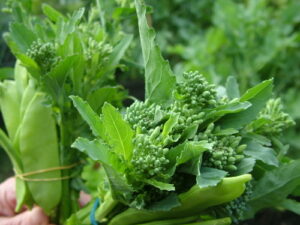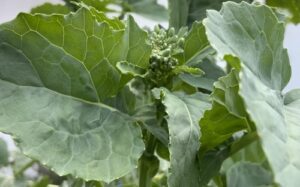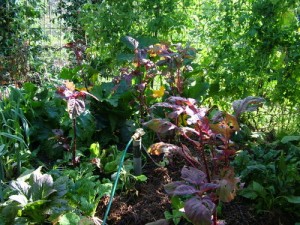I have had a lovely leafy planting weekend getting grubby in the garden, restoring some sanity after the madcap week and setting me up for the one coming! And I realised that at least half of the leafy greens I have been planting (and picking) are herbs.
I also picked a big bunch of herbs for eating, and big bunch of cuttings for planting, to take over to my daughter’s place. She has just moved house again, as young adults do, and whoever moves into her old house will inherit a great little herb garden.
The trouble with growing herbs is that it is addictive. Once you get used to being able to just duck out to the garden to turn something very ordinary based on dried or canned food into something gourmet, you can’t go back. You ring your mum and say, “If you are coming over this weekend, can you bring herbs?”
If you have only a tiny area (or a tiny window of time) for gardening, every one of the first dozen plants I’d go for would be herbs. In pots or courtyard, herb spiral or window boxes, balcony garden or flower bed, these are the 12 plants I’d plant first. In no particular order (choosing just a dozen was hard enough!):
- Parsley – a super high vitamin, hardy, prolific green. Just a sprig or a sprinkle takes almost any dish to another level. Also allows you to create a salad when there’s virtually no fresh food in the house.
- Regular mint – If you have parsley and mint the whole of the eastern Mediterranean cuisine opens up.
- Garlic chives – perennial, bunching, and easier to grow than regular chives. If you have these, lack of an onion won’t stop you.
- Oregano – perennial, very hardy and can turn tomato sauce out of the bottle into Italian cuisine.
- Greek basil – the perennial small leaf kind, and you have pesto in the repertoire, which means you have gourmet pasta anytime.
- Lemon thyme – If I have to choose between regular and lemon thyme, I’m a sucker for citrus flavours. If I was allowed number 13, I’d go for lemon basil too, or maybe verbena, or lemon myrtle or…
- Culantro (or Mexican coriander) – perennial and hardier than the familiar annual coriander. A completely different plant but the same flavour, and it holds it’s flavour better when cooked.
- Dill – a self seeding annual, so hardy it’s just about a weed. An egg or two or a can of fish…
- Vietnamese mint – a few vegetables and some rice paper, or some miso and noodles …
- Rosemary – the hardiest of the lot, and just a few leaves makes all the difference.
- Sage – for sage burnt butter, which will make a packet of spaghetti look better than going out for takeaway.
- Chillies – ok, they’re not quite a herb, but a perennial chili plant works the same way as herbs, with small quantities there when you need them, taking almost no space or time and opening a whole lot of kitchen doors.
Does anyone have other nominations for the top twelve?




Ooh, delish! I’d have to agree with all of your choices, except that for reasons of pure obstinance I’ve been persisting with annual coriander in my garden. I will now look for the Mexican variety, thanks for the tip!
Great list. We’ve been successful with many of those – parsley, basil, rosemary, oregano and my absolute favourite lemon thyme. But the coriander is being very stubborn. Don’t know if we’ll try again. We just might try the Mexican variety too.
I will have to try Mexican Coriander too, and Garlic Chives!
Curry leaf plant is very handy I find. Most of the time when adding onions to heated oil, I add some Curry Leaves. It has wonderful aroma, adds flavour. Meant to be for spicy dishes, but I use it on some non-spicy ones too.
We’ve got parsley (dying off a bit at the moment), borage, basil, thyme (the regular sort), tarragon, sage, rosemary, lemon grass, and a bay tree in a pot. We did have oregano, but something totally ate it. Every single leaf. Only a stem left. And we did have chives, but I’ve never been very good with chives. Possibly I get over-enthused about eating them.
Oh, and we have regular mint and cat mint. I think that’s it…
I’d also add lemongrass (hardy, perennial, great brewed with honey in hot water!) and nasturtium (brightly coloured flowers that are edible! And it just WONT DIE!).
Pingback:Roots and Perennials Planting in Early Spring – Sage, Rosemary and Thyme
Wow, what an inspiring blog, thanks heaps Linda! Can’t wait to devour all this great information on here 🙂